Jonah, the lynchpin of the Sistine Chapel
All photographs taken by me, with permission, during a special after-hours visit in February 2020. On that occasion, and for one week only, the tapestries designed by Raphael were on display in their intended home for the first time in over four centuries to commemorate the five hundredth anniversary of his death.
Five hundred and eleven years ago today, Michelangelo was finishing work on the ceiling of the Sistine Chapel. It is one of the most visited, discussed, celebrated, and indeed largest paintings in the history of art.
An anniversary is always a good excuse for a post, and given that I’ve been to the chapel in a professional capacity more times than I can even begin to estimate (since 2001; before seizing control of my own destiny my record was thirteen times in one week) it seemed one I couldn’t let pass by unnoticed. No matter how many times one visits, the chapel constantly offers new points of view and previously unnoticed details. The jostling of thousands of visitors can, on the other hand, be more than a little tiresome at times. But with a little judicious timing, and by finding the best spots, even when crowded its delights need not be lost.
Today we, paying hoi polloi, enter under Michelangelo’s Last Judgement (completed nearly thirty years after the ceiling), funnelled in beneath the flames of Hell. However the top brass of the Church and their entourages have, for over five hundred years, entered from the opposite end; the initial viewpoint that Michelangelo had in mind and from where the paintings on the ceiling make most sense.
From this end wall, as one looks to the centre of the opposite end of the ceiling (directly above the centre of the Last Judgement), a large muscular figure catches one’s eye. This is Jonah. He is shown with his head thrown back, his legs hanging forward. His position is in direct contrast to the physical form of the vault on which he is painted: while Jonah leans back the ceiling curves towards us.
Michelangelo’s extraordinary manipulation of perspective reveals his study of ancient sculpture (as indeed do his wildly muscular figures) and his work in statuary. Michelangelo paints like a sculptor. By Jonah’s side a fish nibbles at his thigh, an allusion to the big fish—or whale—which swallowed him.
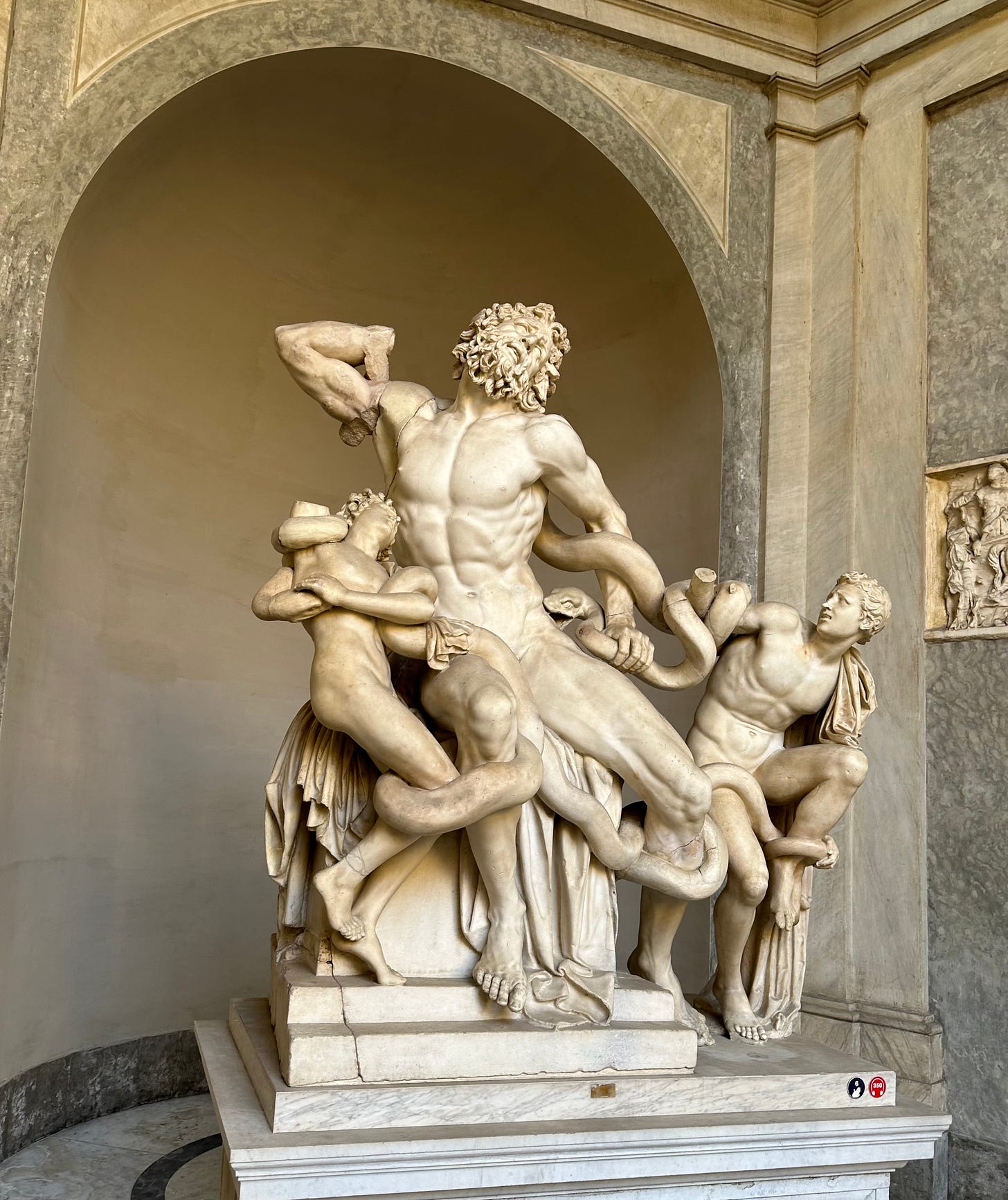
Jonah’s presence on the ceiling is as one of the prophets, and his prophecy is that of the Resurrection. The days and nights Jonah spent in the belly of the fish foretell the days and nights Christ would spend in his tomb; Jonah being spat out foreshadows the Resurrection.
That Jonah catches one’s eye when entering the chapel is a both a practical and allegorical artistic device. His head is thrown back so that we naturally follow his line of sight. We look to see what he is looking at, which sets our eyes moving along the central panels of the ceiling with their stories of the Creation and of the life of Noah. When we reach the last scene on the ceiling, our eyes are drawn to the vast prophets and sibyls along the sides. They are here to foretell the birth of Christ: the prophets and prophetesses from the Graeco-Roman and Hebrew traditions here seen through the lens of the High Renaissance as the roots from which Christianity would flower.
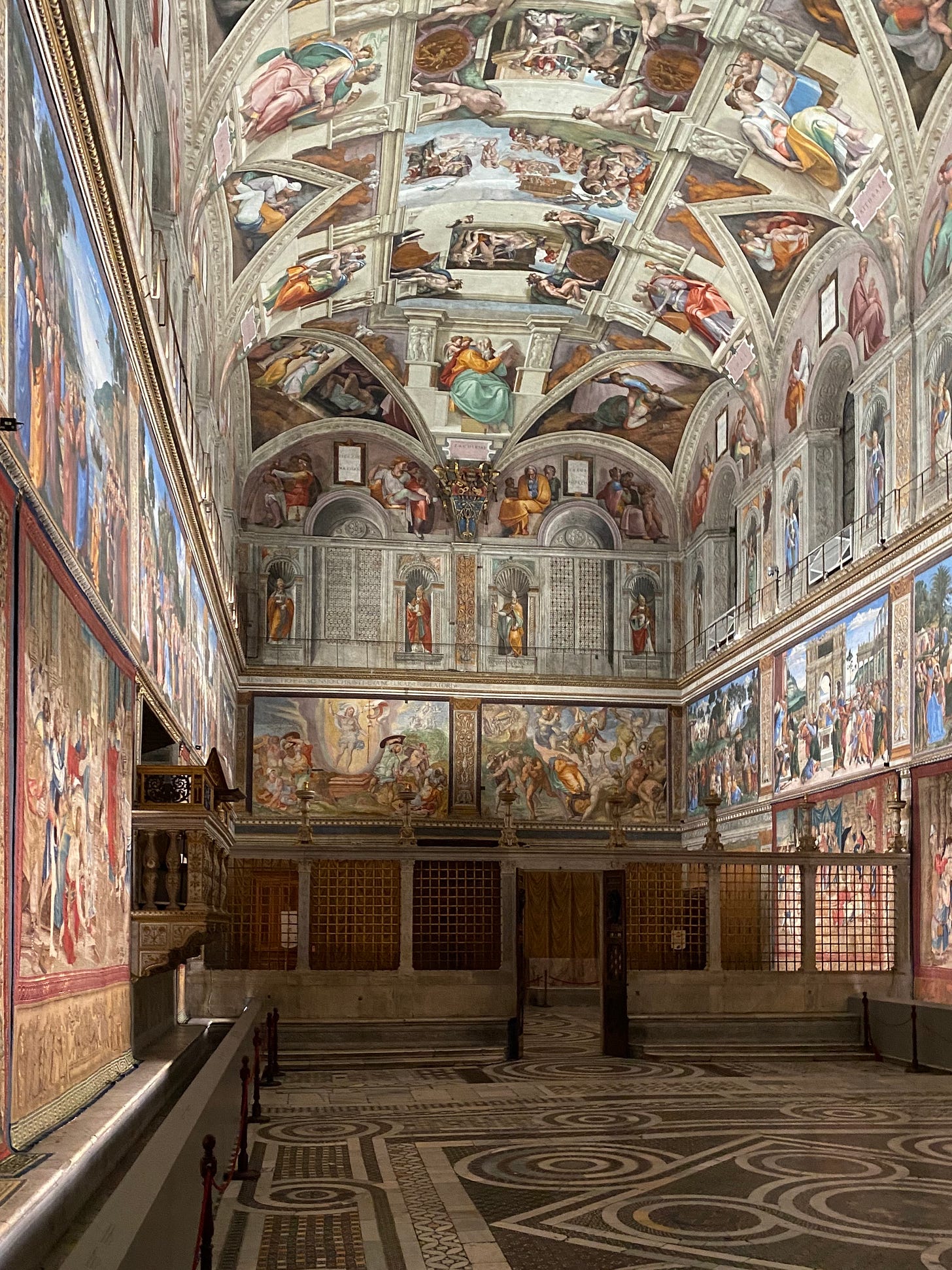
These dynamic prophets then lead our eyes back to Jonah, and the promise of the Resurrection. The ceiling of the Sistine Chapel is an expression of the promise of the coming of Christ; Jonah its Alpha and Omega. It is a wonderful reminder that artists spend a great deal of time getting us looking in the right direction.


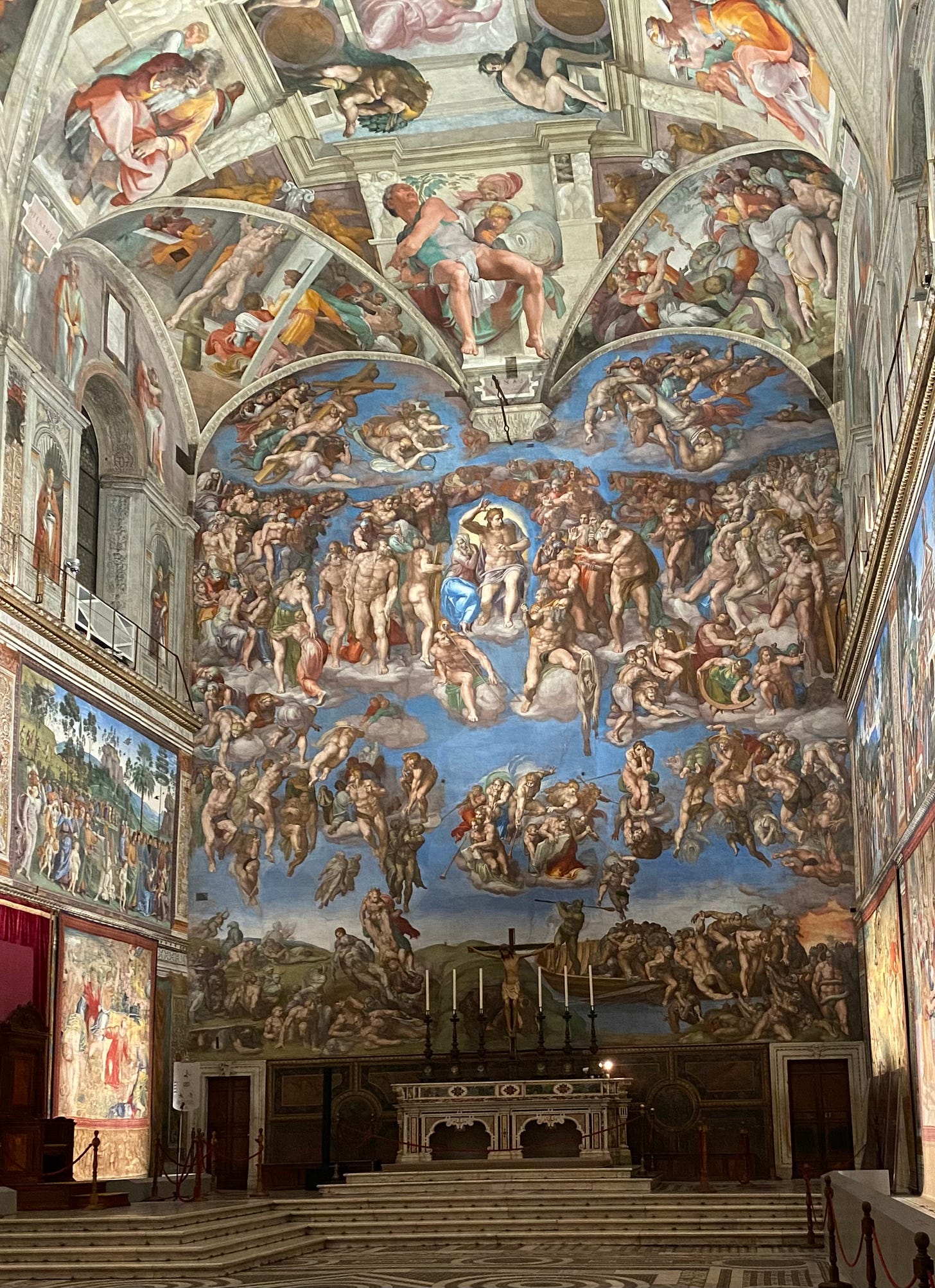
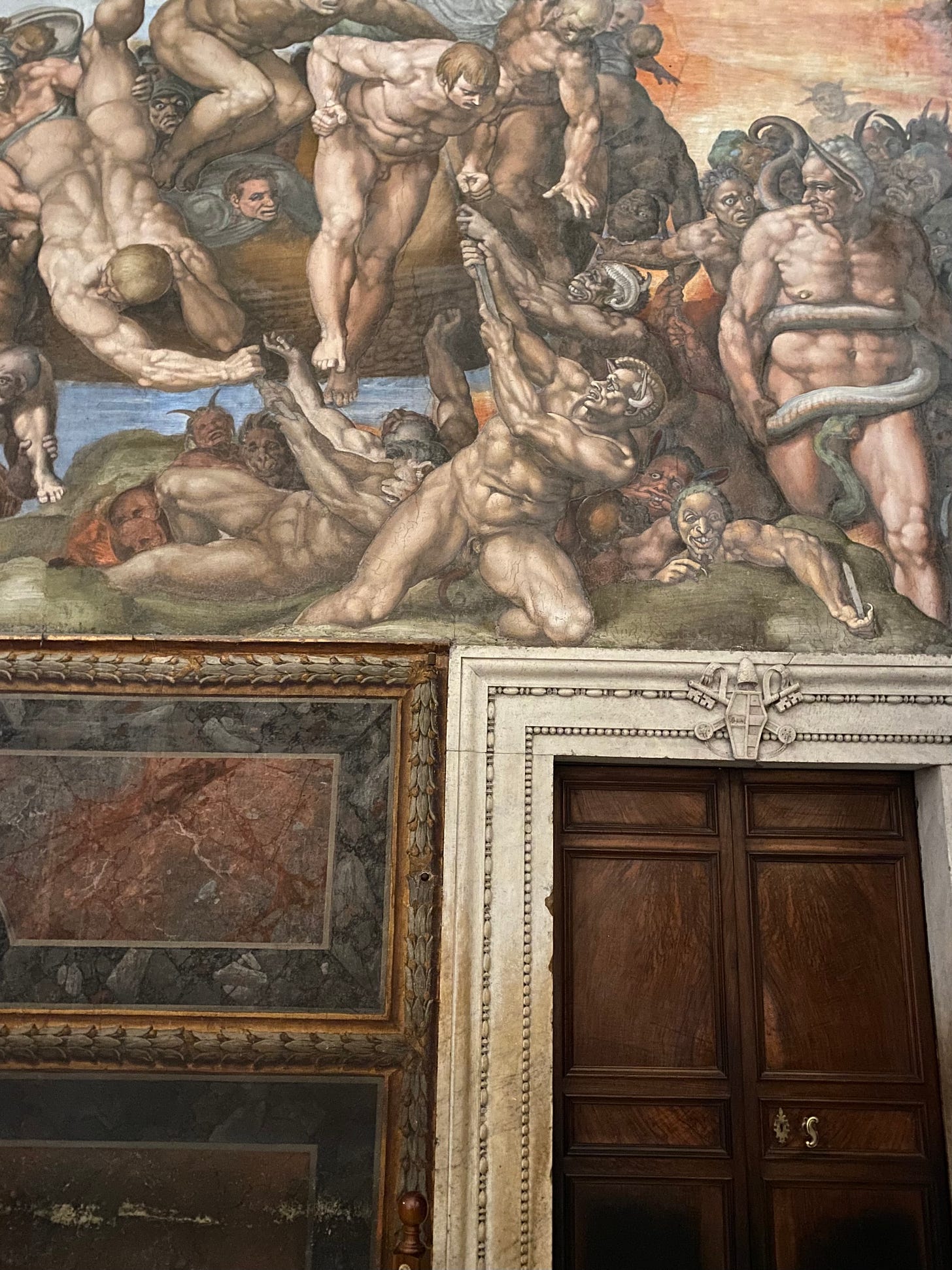
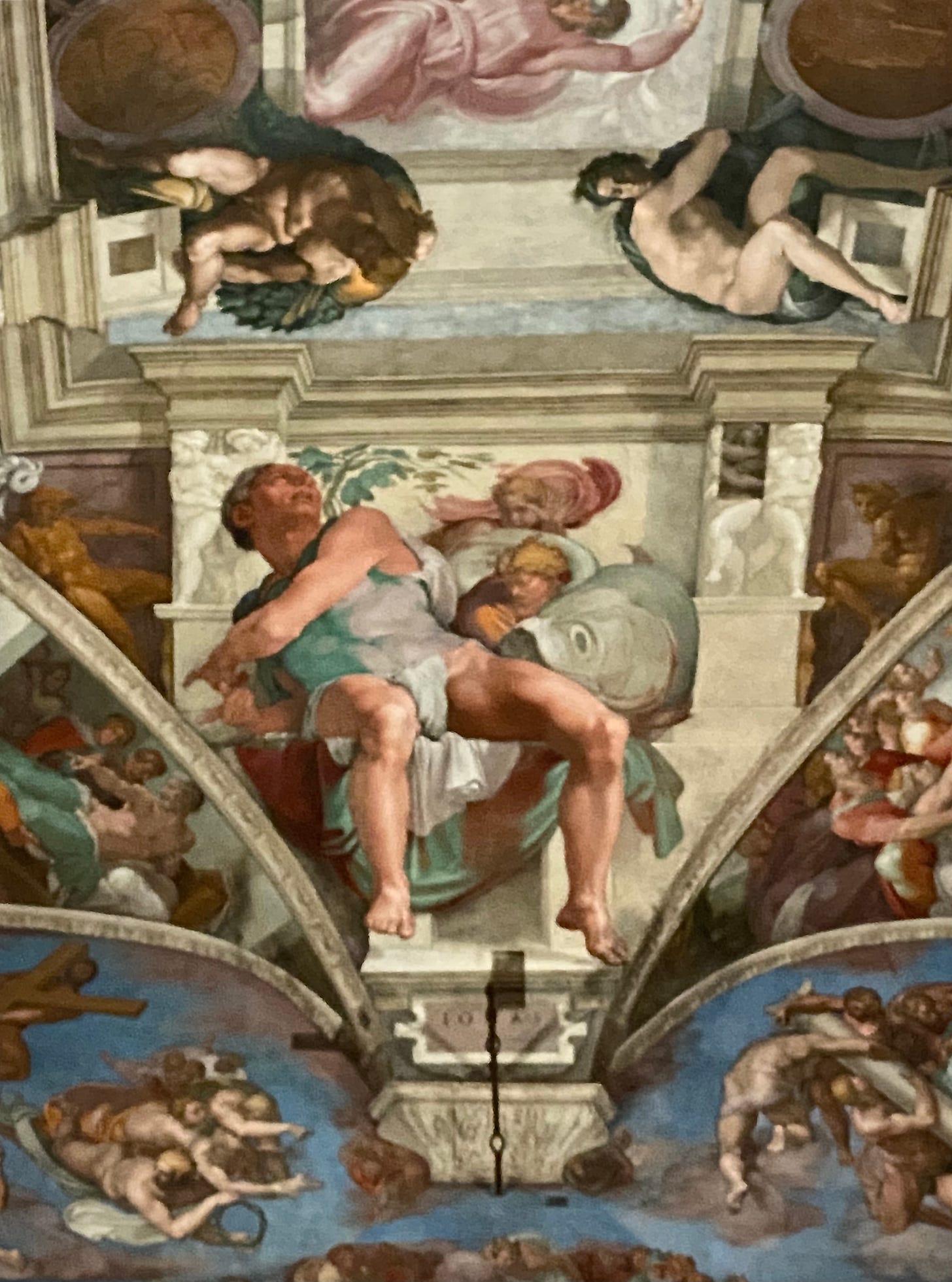
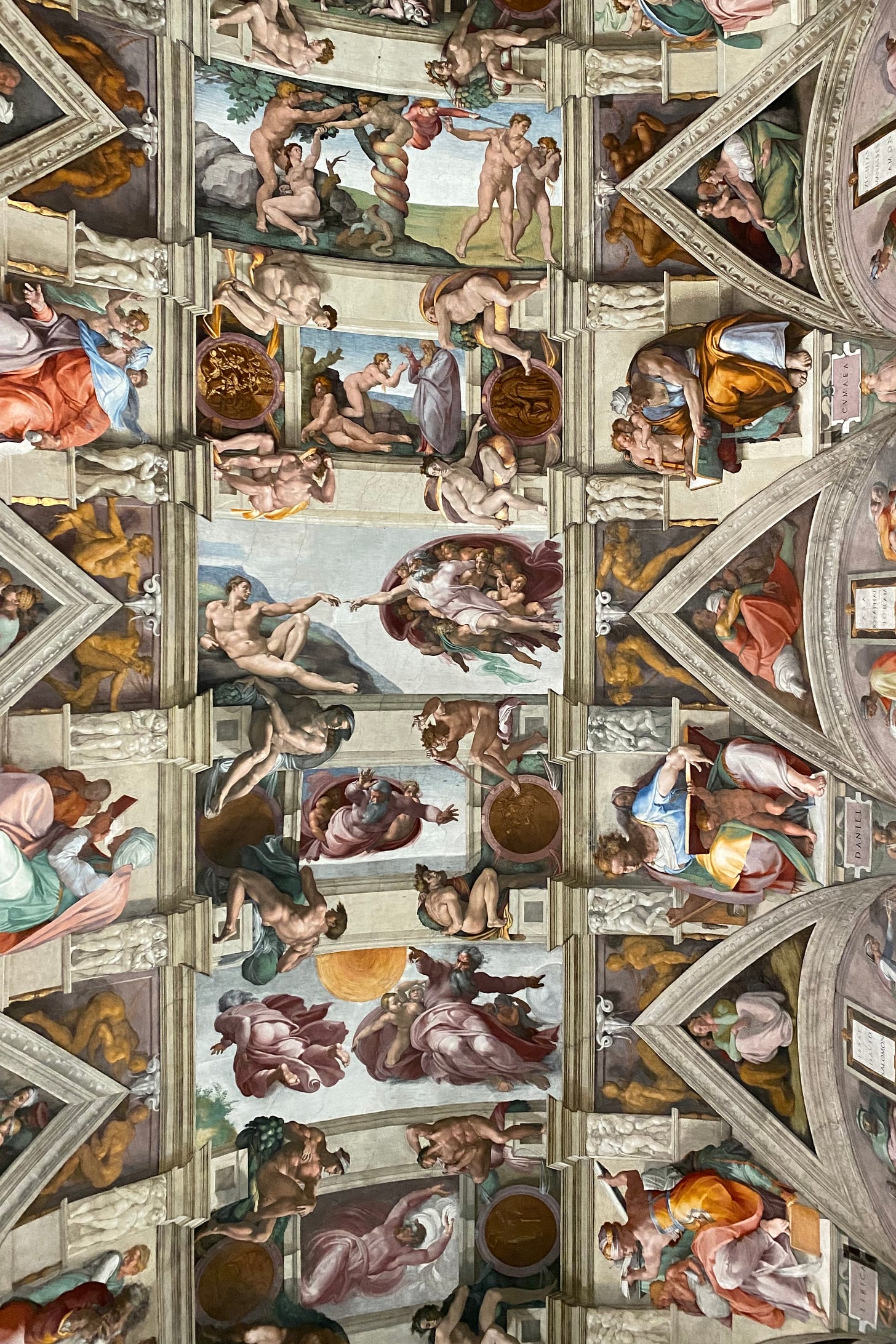
Have been there may times but never noticed that big fish!
The one and only time I've been in the Sistine Chapel I was overwhelmed both by the crowds and by the immense beauty. Information like this is so helpful --it gives the eyes a path to follow. I had not previously considered the significance of Jonah here, but as they say, once you see it, it can't be unseen.